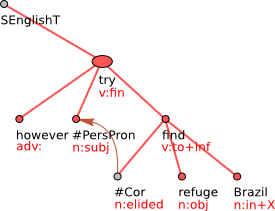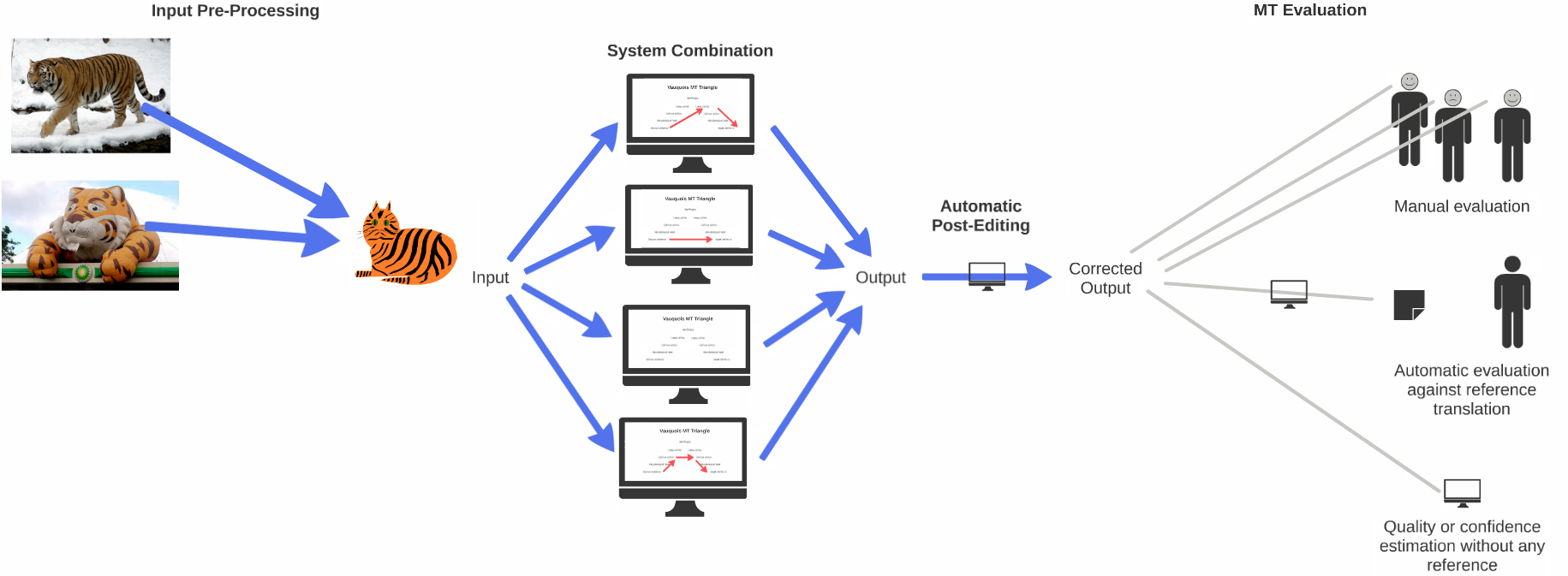Intro
You can browse the Prezi slides here.
Ambiguity in language
Unusual grammatical constructions with unexpected meaning can be used to (deliberately) mislead a human reader. These are called garden path sentences. Consider some of the best-known examples:
- Fat people eat accumulates.
- The horse raced past the barn fell.
- The government plans to raise taxes were defeated.
But everyday sentences actually contain countless ambiguities which humans resolve so naturally that they do not even notice them. Knowledge of the world and context are essential.
The plant is next to the bank.
- plant
- factory?
- flower?
- bank
- financial institution?
- river side?
Types of MT systems

Approaches to MT can be categorized by whether they work directly with surface words or whether they utilize some (linguistic) abstraction. Many successful MT systems disregard any linguistic information and treat all words as unrelated, indivisible units. Other systems perform linguistic analysis on the source side and then do transfer -- either to some abstract representation or directly to target-side surface words. In the first case, target-side generation is needed to create the surface words of the translation.

Another possible distinction is how the systems are "trained" -- in the past, linguistic experts would manually develop rules to describe the analysis, transfer or generation for a particular language pair. Such rule-based systems sometimes grew to very mature, complex systems. However, they can be very costly to build and difficult to adapt -- either to a new genre/domain or to different languages. The other end of this continuum is occupied by purely statistical systems which only require data and utilize statistical models or machine learning to capture the knowledge required for translation. Finally, many flavors of hybrid systems have been developed, which combine data-driven and rule-based components in some way.
System combination
Different (types of) MT systems are prone to different errors. Their outputs can thus hopefully be combined to obtain a better translation than any of the individual translation hypotheses.
Pre-processing
Text data in the wild come in all kinds of forms. Documents with different encoding, mark-up or annotation, articles and discussions on the web with abbreviations and typos etc. Pre-processing is an essential subtask of converting all this data into a unified form that the MT system can handle.
MT evaluation
Evaluation of translation quality is essential for system development. Manual evaluation seems ideal at first glance, however humans often surprisingly disagree when comparing outputs of different MT systems. Moreover, such evaluation is labor-intensive and not easily reproducible. Automatic measures have therefore been developed -- in essence, these compare the MT output to some reference translation.
Additionally, quality estimation is a field that develops methods to recognize whether a translation is good without a reference translation or manual judgement. Such a score can help estimate the amount of work that a professional translator needs to do -- just confirm that a translation is correct, make some minor edits or re-write it from scratch.
